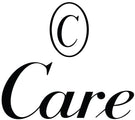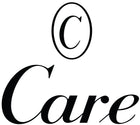The sun is the source of life on Earth. The sun provides energy for all living beings on our planet. For us, sunshine is a natural source of vitamin D. That is why vitamin D is also called the sunshine vitamin. The sun’s rays have been doing this for the last 50 million years. When exposed to sunlight, the dehydrocholesterol in our skin absorbs ultraviolet B (UVB) radiation and converts it into vitamin D. using the same vitamin, our body absorbs calcium, which is essential for strong bones. When exposed to the sun for a very short time, our skin produces enough vitamin D to meet our daily needs.
However, it is not all sunshine and rainbows, the rays from the sun also cause a lot of damage to our skin. The rays contain two types of ultraviolet radiation, commonly called UVA and UVB.
UVA radiation affects the skin at every level, from the surface to the depths of the skin. This radiation also affects the collagen and elastin fibers between layers of skin that keep our skin young and attractive; also damaging the epidermal (outermost layer of skin) cells and the tiny blood vessels inside our skin called capillaries.
The UVB radiation, which provides vitamin-D to our skin, can cause severe damage to the upper surface of the skin when exposed to the sun for long periods of time. It severely damages DNA in the epidermis and causes a serious skin condition called Photoaging.
What Is Photoaging?
Photoaging, sometimes called photodamage or sun damage, is a skin condition that causes the signs of aging to appear at an early age. We can say that the sun makes the skin age prematurely. UV radiation, especially UVB radiation, mutates DNA inside skin cells. This mutation takes place through chemical changes that cause wrinkles skin as well as damage to collagen and elastin.
Symptoms
Because photodamage begins with the deepest layers of the skin, it takes a long time to reach the outer surface and become noticeable. In that sense, it is a condition that starts to get worse before the symptoms appear. Photoaging symptoms begin to appear at an early age, especially in the late teens and young adults. These symptoms are usually as follows.
- Skin redness and blemishes
- Loss of skin tone and elasticity
- Wrinkles begin to form on those parts of the body which are exposed to sunlight. Especially on the face, eyes, and forehead
- Spider veins (broken capillaries) appear on the face and neck, most commonly around the nose, cheeks, and chin.
- The color and freshness of the lips are affected
- The skin becomes rough and leathery
Prevention
There are several precautionary measures that can be taken to prevent this skin condition from developing. The easiest way to do this is to minimize exposure to the sun. Especially when the sun's radiation is at its peak. It is usually from 10 a.m. to 5 p.m. during summertime.
- The most basic and effective way to avoid photoaging is to use sun protection before going out in the sun.
- The best method of sun protection is to use sunscreen products.
- Sunblocks’s reflect away the UV rays from the skin and block them from entering the skin layers.
- Broad-spectrum sunscreen products are excellent in that they provide excellent coverage against damage from both UVA and UVB.
Method
To get the most out of sunblock products, it is important to know when and how much to use. The correct method of application and timing are the important factors of using Sunblock.
- At any daytime and especially when the sunlight is at its peak, use of sunblock is a must before going out in the sun
- Remember to reapply it after swimming or exercise.
- Use an ounce of sunblock (a handful) to cover your entire body.
- Apply it on all parts of your skin exposed to the sun, including the ears, back and shoulders
Care Sunblock Lotion
Titanium Dioxide or Zinc Oxide is used as the active ingredient in most sunblock products. Similarly, Avobenzone or Oxybenzone is used as an active ingredient in sunscreen products.
Care Sunblock Lotion provides triple protection thanks to its three ingredients (Avobenzone, Titanium Dioxide, OMC) and includes the benefits of sunblock and sunscreen at the same time.
Titanium Dioxide or Zinc Oxide make the sunblock products thicker and harder to spread on the body. Thanks to the valuable liquid ingredients used in Care Sunblock Lotion, it not only provides sun protection but is also easy to use. In addition to being thick, the ordinary sunblock products are also very noticeable, as you have often seen athletes in the stadium and people at beach wearing sunblock on the nose and other parts of the face. That's why people avoid using it.
Care Sunblock Lotion is transparent and does not look as noticeable on the skin as a sunblock. Therefore, it can be used on any occasion and any place without any hesitation.
Care Sunblock Lotion not only provides broad spectrum UV protection but also provides better skin protection due to its anti-fungal and antioxidant properties. The extra vitamins and moisturizing agents in it also keep your skin healthy, moisturized and hydrated.


